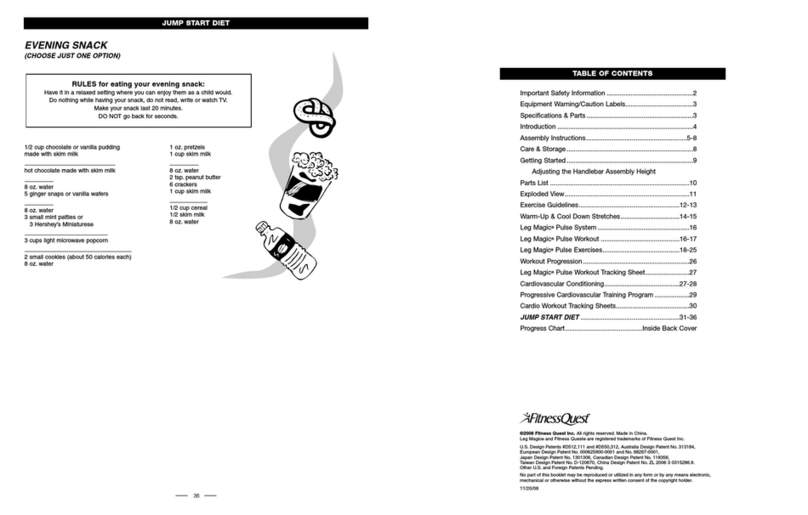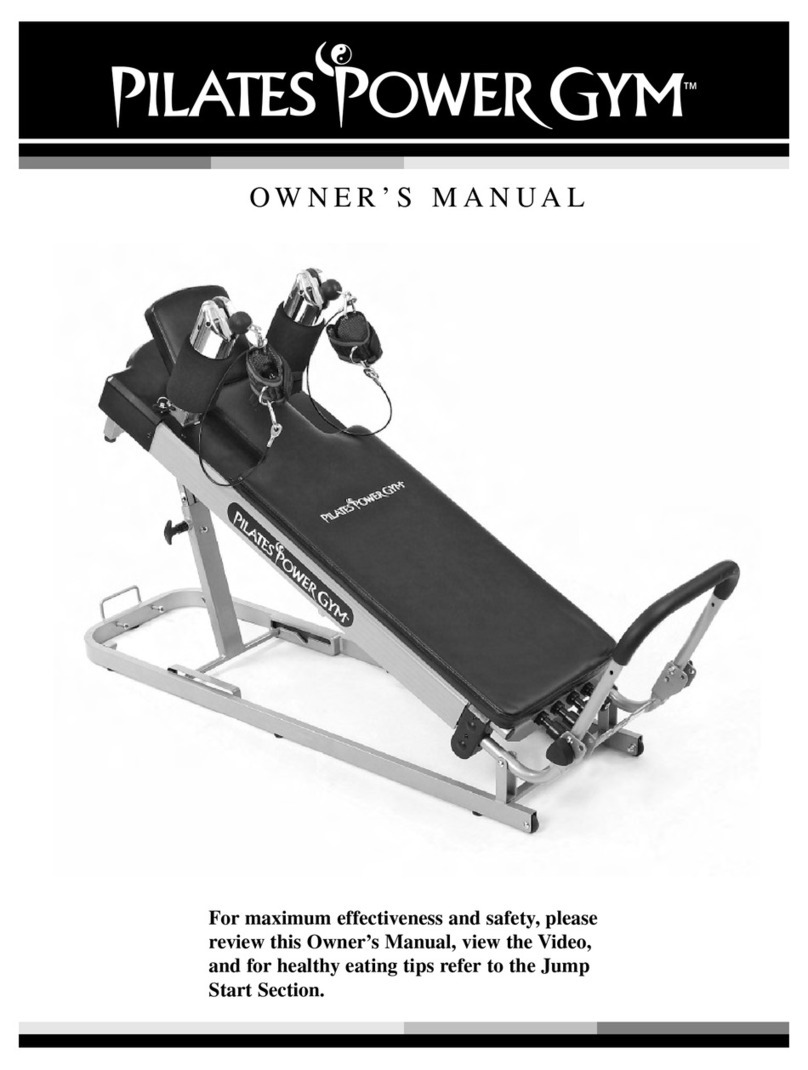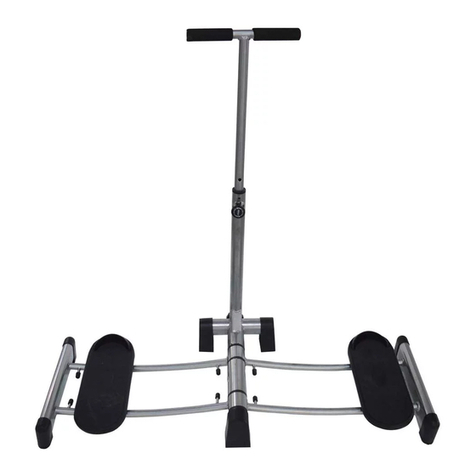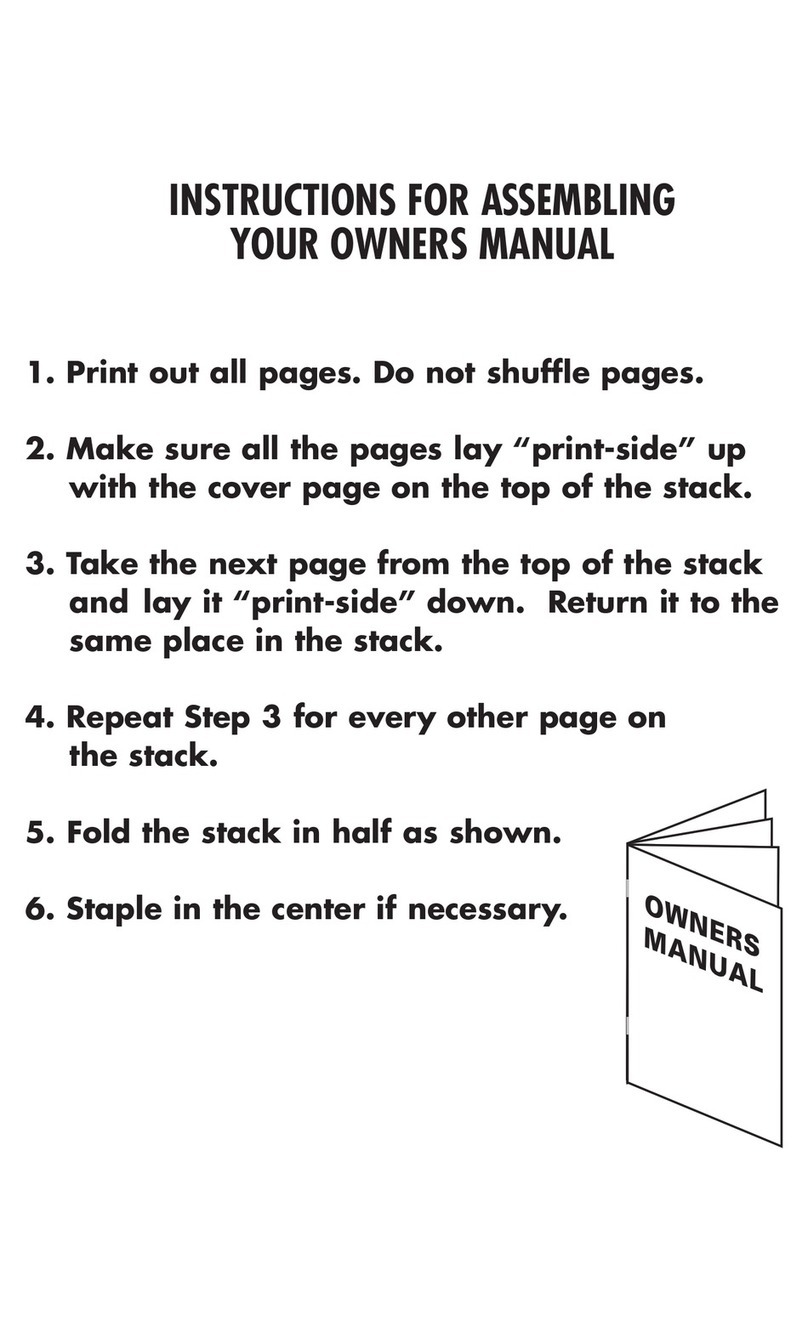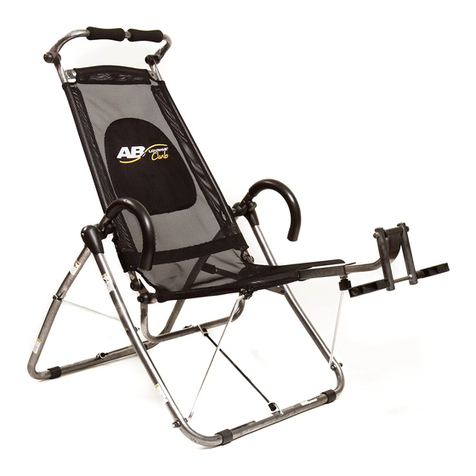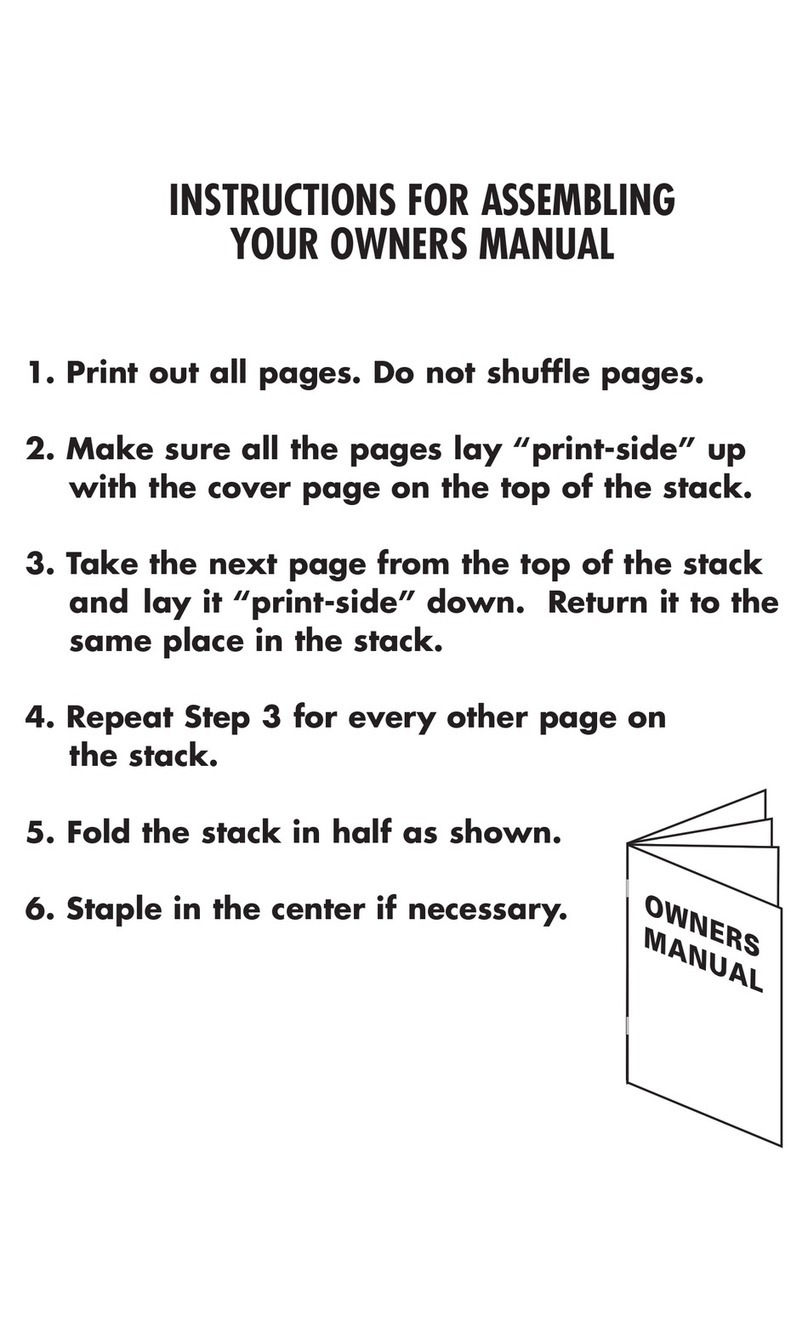-------- 37 ---------------- 12 --------
EXERCISE GUIDELINES
WARNING:
If you are over 35 and have been inactive for
several years, you should consult your physician,
who may or may not recommend a graded
exercise test. Your physician can also assist you
in determining the Target Heart Rate Zone
appropriate for your age and physical condition.
You should also consult your physician if you
have the following:
• High blood pressure
• High cholesterol
• Asthma
• Heart trouble
• Family history of early stroke or
heart attack deaths
• Frequent dizzy spells
• Extreme breathlessness after mild exertion
• Arthritis or other bone problems
• Severe muscular, ligament or
tendon problems
• Other known or suspected disease
• If you experience any pain or tightness
in your chest, an irregular heartbeat or
shortness of breath, stop exercising
immediately. Consult your physician
before continuing.
• Pregnant
• Balance impairment
• Taking medications that affect heart rate
IMPORTANT – Please review this section before you begin exercising.
Workout Phases
Every workout should consist of the following
three phases:
Warm-Up
To prevent injury and maximize performance, we
recommend that each workout period should start with
a warm-up.Your warm-up should gently prepare your
muscles for the coming exertion. Start by doing 5 to
10 minutes of gentle exercise, such as walking, that
gradually increases your heart rate and loosens up
your muscles.Your warm-up exercise should be aerobic
in nature and only require an easy, unforced range of
motion. This may be followed by 5 to 10 minutes of
stretching. Refer to the stretches found on pages 14
and 15 of this manual. Never push yourself beyond a
point of gentle tension on the muscles being stretched.
Keep your movements gentle, rhythmic and controlled.
Muscle Toning or Cardio Workout
Your warm-up should be followed by the Pilates Power
ym™workout or a cardio workout, depending on your
workout plan for that day. Regardless of which type of
workout you are doing, build up as your current fitness
level allows and progress at a rate that is comfortable
to you.
For the first week or so, you may feel some muscle
soreness. This is quite normal and should disappear
in a matter of days. If you experience major discomfort,
you may be on a regimen that is too advanced for you
or you may have increased your program too rapidly.
Headrest Adjustme t
There are two positions for the Headrest, flat and raised. The Headrest is in the
flat position when unit is first received. To move Headrest to raised position stand
at the rear of the unit, lift the Headrest and push Headrest away from you letting
the bracket slide into place. To move the Headrest from a raised position, lift
Headrest, pull it towards you then set down the Headrest so it lies flat.
Foot Rest Bar Setti gs – The Foot Rest Bar has 2 position settings.
Sta dard Upright Positio
This is a recommended
position for users up to
approximately 5’8” tall.
Position the Foot Rest Bar
Assembly upright and fully
insert Knob and tighten.
Tilted Positio
This position is recommended
for users approximately 5’8”
or taller. Position the Foot Rest
Bar Assembly away from the
Glideboard and fully insert and
tighten the Knob.
Head est
( aised position)
Benefits of Aerobic Training
Health benefits of aerobic exercise include the following:
1. A stronger and healthier heart.
2. Increased HDL. This “good” cholesterol helps keep
your arteries unplugged and healthy.
3. Decreased total cholesterol. This is the debris in
your blood that can clog your arteries.
4. Reduced blood pressure. Even moderate exercise
can help.
5. Reduced risk for heart attack and stroke.
6. Decreased body fat and an ability to help you
reach your desirable weight. You’ll become a better
fat-burner and burn a lot of calories every session.
7. Decreased risk for diabetes.
8. Reduced feelings of anxiety, tension, and depression.
9. Improved sleep.
10. Higher levels of energy. Efficient delivery and use
of blood and oxygen is the key to increased vigor
and performance.
Warming Up And Cooling Down
Warming up and cooling down are essential to a
balanced and safe exercise program. A proper
warm-up and cool-down can:
• Make your workouts safe and easier to do,
• Limit the risk of unnecessary stress on your heart,
• et you ready for your activity,
• Improve your stamina and endurance (you won’t
tire as quickly),
• Decrease your risk for injury,
• Increase enjoyment of your workouts, and
• Help you stick with your health and fitness program.
Warm-Up
To prevent injury and maximize performance, we
recommend that each workout period should start with
a warm-up.Your warm-up should gently prepare your
muscles for the coming exertion. Start by doing 5 to 10
minutes of gentle exercise that gradually increases your
heart rate and loosens up your muscles. Your warm-up
exercise should be aerobic in nature and only require an
easy, unforced range of motion. This should be followed
by 5 to 10 minutes of stretching. Refer to the stretches
found on pages 14 and 15 of this manual. Never push
yourself beyond a point of gentle tension or strain.
Keep your movements gentle, rhythmic and controlled.
Cool Down and Stretching
Your workout should be followed by a cool down. The
cool down should consist of 5 to 10 minutes of slow
walking followed by stretching. Refer to the stretches
found on pages 14 and 15 of this manual. Never push
yourself beyond a point of gentle tension or strain.
Keep your movements gentle, rhythmic and controlled.
How Often, How ong, and How Hard
The choices you make about the frequency (how often),
duration (how long), and intensity (how hard) at which
you will train, will directly influence your training results.
How often. If you want to see serious improvements in
your fitness, lose weight and develop a good training
base, you need to do cardio workouts three to six
times per week.
If you are just starting a program or out of shape, don’t
let these recommendations discourage or mislead you.
Realize that doing cardio training two to three times per
week will still result in significant fitness improvement
and health benefits. Your long-term goal is to build up
to exercising your heart on most days of the week.
How long. How long you work out depends on your
current level of fitness. Again, if you’re just starting a
program or out of shape, don’t follow strict textbook
recommendations. Instead, start with 5 to 10 minutes
once or twice per day. You will see significant fitness
improvement. Your long-term goal is to build to a
duration of 30 to 60 minutes of cardiovascular
activity on most days of the week.
How hard. Aerobic intensity guidelines for healthy adults
are generally set at 60 to 85 percent of heart rate. But,
if you’re out of shape, remember that moderate to low
level and consistent cardiovascular training – well below
the standard recommendations set forth – can result in
substantial and beneficial effects to your health and
can greatly improve cardiovascular endurance.
You can use the following calculation to determine what
percentage of your heart rate you are working at:
% heart rate = (220 - age) x %.
Using this calculation, a 70% heart rate for a 40 year old
would be (220 - 40) x 70% or 126. Thus, this individual
would need to reach 126 beats per minute to equal a
70% heart rate.
The above are guidelines, people with any medical
limitations should discuss this formula with their
physician.
Inse t Knob
he e fo
Standa d
Up ight
Position
Inse t
Knob
he e fo
Tilted
Position






















